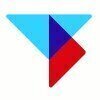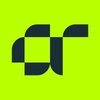Filter interviews by
Chiyoda Corporation Piping Designer Interview Questions and Answers
Chiyoda Corporation Piping Designer Interview Experiences
1 interview found
I appeared for an interview in Jan 2025.
(2 Questions)
- Q1. Pipe rack piping discribe
- Q2. Pump piping decribe
Interview questions from similar companies

Interview Questionnaire
3 Questions
- Q1. PSC girder
- Q2. Minor bridge
- Q3. Related
Interview Preparation Tips

I applied via Referral and was interviewed in Oct 2020. There were 3 interview rounds.
Interview Questionnaire
1 Question
- Q1. Technical questions relating to our job in deep. That's it
Interview Preparation Tips
Put your thoughts clearly.

I applied via Approached by Company and was interviewed in Mar 2021. There were 3 interview rounds.
Interview Questionnaire
2 Questions
- Q1. What's job performed till now and explanation about core job along with quantities.
- Q2. About work profile and job performance
Interview Preparation Tips
Don't panic or Hasistate.

I applied via Naukri.com and was interviewed in Apr 2023. There were 3 interview rounds.

(1 Question)
- Q1. Most interview question based on resume only. And related oil and gas industry.
(1 Question)
- Q1. Salary discussion
Interview Preparation Tips
- API 6A
- Subsea
- Pressure Handling

I applied via Naukri.com and was interviewed in Sep 2023. There was 1 interview round.
(2 Questions)
- Q1. Basic Geotechnical questions
- Q2. Piling Design, Shallow Foundation Design, International Codes for subsea structure foundation designs.
Interview Preparation Tips

I applied via Referral and was interviewed in Sep 2022. There were 2 interview rounds.

(2 Questions)
- Q1. 1. Safety valve types and selection criteria 2. Thermowell Design concept 3. Diff. Pressure Type Flow meter concept and criteria 4. Cable construction details 5. Hook-Ups details
- Q2. 1. Installation details 2. Flowmeter straigth lengths requirement
Interview Preparation Tips

I applied via Referral and was interviewed in Dec 2021. There were 4 interview rounds.
Interview Questionnaire
5 Questions
- Q1. Package discussion
- Q2. Related to resume and oil and gas
- Q3. Pump related Drum related Exchanger related
- Q4. Related to tool mentioned in resume
- Q5. Pump suction and discharge Drum modelling


(1 Question)
- Q1. Ammonia process
(2 Questions)
- Q1. How much salary expectations?
- Q2. Salary Negotiable
Interview Preparation Tips


(4 Questions)
- Q1. Saudi aramco engineering standards.
- Ans.
Saudi Aramco Engineering Standards are guidelines and specifications used in engineering projects for Saudi Aramco.
Saudi Aramco Engineering Standards cover various aspects of engineering design, materials, construction, and operation.
These standards ensure consistency, quality, and safety in all engineering projects undertaken by Saudi Aramco.
Examples of areas covered by the standards include piping design, electrical ...
- Q2. Design related discussions
- Q3. Safe practices in design
- Ans.
Safe practices in design involve considering potential hazards, following regulations, and prioritizing safety.
Identify potential hazards in the design process
Follow industry regulations and standards for safety
Prioritize safety over cost or convenience
Regularly review and update safety protocols
Include safety features in the design, such as emergency shut-off valves
Consider environmental impact and sustainability in d
- Q4. Quality of deliverables
- Ans.
Quality of deliverables is crucial for successful project completion.
Ensuring accuracy and completeness of drawings and documents
Adhering to project specifications and standards
Regularly reviewing and revising deliverables to meet client requirements
Seeking feedback from stakeholders to improve quality
Using software tools effectively to enhance deliverables
Maintaining clear communication with team members for consisten
Interview Preparation Tips
Skills evaluated in this interview
Chiyoda Corporation Interview FAQs
Tell us how to improve this page.
Interview Questions for Popular Designations
- Piping Engineer Interview Questions
- Piping Design Engineer Interview Questions
- Senior Piping Engineer Interview Questions
- Piping Supervisor Interview Questions
- Piping Stress Engineer Interview Questions
- Piping Foreman Interview Questions
- Senior Piping Designer Interview Questions
- Mechanical Piping Engineer Interview Questions
- Show more
Chiyoda Corporation Piping Designer Interview Process
based on 1 interview
Interview experience
Interview Questions from Similar Companies
|
Senior Electrical Engineer
5
salaries
| ₹17 L/yr - ₹45 L/yr |
|
Senior Engineer
4
salaries
| ₹18 L/yr - ₹51 L/yr |
|
Electrical Engineer
4
salaries
| ₹19.6 L/yr - ₹60 L/yr |
|
Senior Process Engineer
4
salaries
| ₹23 L/yr - ₹60 L/yr |
|
Process Engineer
3
salaries
| ₹46 L/yr - ₹50 L/yr |

L&T Energy Hydrocarbon

Tata Projects

TechnipFMC

Toyo Engineering
- Home >
- Interviews >
- Chiyoda Corporation Interview Questions >
- Chiyoda Corporation Piping Designer Interview Questions
















